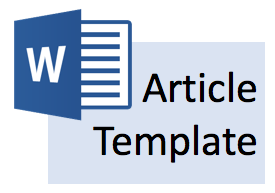COMPARATIVE ADVANTAGE MEASUREMENT IN ASEAN’S TEN LEADING EXPORT COMMODITIES: A CASE STUDY OF ASEAN-5
Abstract
Keywords
Full Text:
PDFReferences
Akhtar, N., Zakir, N., and Ghani, E. 2008. Changing revealed comparative advantage : a case study of footwear indsutry of Pakistan. The Pakistan Development Review, 47(4), 695-709.
ASEAN Economic Blueprint. Retrieved from http:// www. asean. org/wpcontent/uploads / archive/5187-10.pdf BDG Asia. 2014. “Southeast Asia’s Top Product Export Sectors (2013) ”.Accessed 10thMay 2016. http://www.bdgasia.com/southeast-asias-topexport-sectors-2013/
Drysdale, P. and Garnautt, R. 1982. Trade intensities and the analysis of bilateral trade flows in a many country world : a survey. Hitotsubashi Journal of Economics, 22 (2), 62-84.
Kasahara, S. 2004. The flying geese paradigm : a critical study of its application to east asean regional development (UNCTAD Discussion Paper No. 169) = Retrieved from United Nations Conference on Trade and Development website http://unctad.org/en/docs/osgdp20043_en.pdf.
Kojima, K. 2000. The “flying geese” model of Asian economics development : origin,theoritical extensions, and regional policy implications. Journal of Asian Economics, 11 (4) , 375-401.
Laursen, K. 1998. Revealed comparative advantage and the alternatives as measures of international specialisation (DRUID Working Paper No. 9830). Retrieved from Danish Research Unit For Industrial Dynamics website http://www3.druid.dk/wp/19980030.pdf.
Ng, F. and Yeats, A. 2003. Major Trade trends in east asia, what are their implications for regional cooperation and growth? ( Policy Research Working Paper No. 3084 .Retrieved from IDEAS website https://ideas.repec.org/r/wbk/wbrwps/3084.html
Nopirin. 2011. Ekonomi Internasional. Edisi 3. BPFE : Yogyakarta.
Sanidas, E. And Shin, Y. 2010. Comparison of revealed comparative advantage indices with Application to trade tendencies of east asian countries. Retrieved from www.akes.or.kr/eng/papers(2010) /24.full.pdf
Shohibul, A. 2013. Revealed comparative advantage measure : ASEAN-China trade flows. Journal of Economics and Sustainable Development, 4 (7), 136-145.
US Commercial Service. 2014. “Understanding the ASEAN Economic Community (AEC)– Frequently Asked Questions”. Accessed 17 May 2016 http://export.gov/asean/build/groups/public/@eg_asean/documents/webc ntent/eg_asean_084987.pdf
Valle, P.A.M. and Aburqueque, M. A. 2009. The comparative advantage of some agribusiness products of the state of goiás and their pattern of trade flow to MERCOSUR: testing regional integration, for the period of 2000 to 2008. Retrieved from http://pendientedemigracion.ucm.es/info/ec/jec12/ archivos/A2ECONOMIA%20REGIONAL%20Y%20TERRITORIO/ORAL/ALBUQUERQUEMARQUES/ALBUQUERQUE-MARQUES.pdf Vollrath, T. L. 1991. A theoretical evaluation of alternative trade intensity measures of revealed comparative advantage. Weltwirtschaftliches Archiv, 127(2), 265-280.
Widodo, T. 2009. Comparative advantage : theory, empirical measures, and case studies.Review of Economic and Business Studies. 4, 57-82.
Wikipedia. “Masyarakat Ekonomi ASEAN”. Accessed 15th May 2016.https://id.wikipedia.org/wiki/Masyarakat_Ekonomi_ASEAN
Williem. 2012. Keunggulan komparatif dan intensitas perdagangan ASEANMERCOSUR FTA. Skripsi: Fakultas Ekonomika dan Bisnis Universitas Gadjah Mada.
Yilmaz, B. 2003. Turkey's competitiveness in the european union: a comparison with five candidate countries - Bulgaria, the Czech Republic, Hungary,
Poland, Romania – and the EU15 (ezoneplus Working Paper No. 12) Retrieved from www.ezoneplus.org/.../ezoneplus_wp_twelve.pdf
Refbacks
- There are currently no refbacks.


